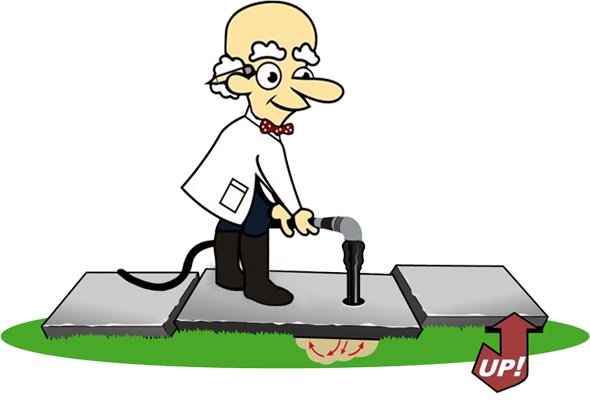IN THIS ARTICLE
February 13th, 2024
By: Kris Winters
The Ultimate Guide to Fixing Concrete Pool Deck Settlement
In this ultimate guide to fixing concrete pool deck settlement, we will discuss the causes of pool deck settlement and the best methods for fixing it. A concrete pool deck is a great addition to any backyard, providing a durable and attractive surface for lounging and entertaining. However, over time, the ground beneath the pool deck can shift and settle, resulting in a sinking concrete pool deck. This can not only be unsightly, but it can also create a safety hazard.
Causes of Concrete Pool Deck Settlement
There are several factors that can contribute to concrete pool deck settlement. One of the most common causes is poor soil compaction during the initial construction of the pool deck. If the soil is not properly compacted, it can shift and settle over time, causing the concrete to sink.
Another common cause is water erosion, which can wash away the soil beneath the pool deck, creating voids and causing the concrete to sink. Additionally, tree roots can also play a role in concrete pool deck settlement, as they can grow and push against the concrete, causing it to crack and sink.
Signs of Concrete Pool Deck Settlement
It is important to regularly inspect your pool deck for signs of settlement. Some common signs include pool deck cracks, uneven surfaces, and gaps between the pool deck and the pool itself. You may also notice that the pool deck is sloping towards or away from the pool, which can be a sign of settlement.
Fixing Concrete Pool Deck Settlement
There are several methods for fixing concrete pool deck settlement, depending on the severity of the issue. For most settling pool decks, you can use a process called mudjacking, where a mixture of cement, sand, and water is injected beneath the concrete to lift and level it. This is a cost-effective and minimally invasive solution for pool deck leveling.
For more severe settlement, you may need to completely replace the concrete pool deck. However, this is a more expensive and invasive option.
Preventing Future Settlement
To prevent future concrete pool deck settlement, it is important to address any underlying issues. This may include improving soil compaction during construction, redirecting water away from the pool deck, and removing any nearby trees or tree roots. Regular maintenance and inspections can also help catch any issues early on and prevent them from becoming larger problems.
Hiring a Professional
Fixing concrete pool deck settlement can be a complex and labor-intensive process, so it is best to hire a professional for the job. Look for a reputable and experienced contractor who specializes in pool deck lifting repair. They will have the necessary equipment and expertise to properly assess and fix the issue.
By understanding the causes of concrete pool deck settlement and taking the necessary steps to fix and prevent it, you can ensure a safe and enjoyable pool deck for years to come. Don’t let concrete sinking ruin your summer fun – take action and fix it today!
Concrete Chiropractor’s team of experts has decades of experience raising sunken concrete pool deck slabs. We are a professional concrete leveling service that has helped thousands of homeowners avoid the cost of concrete replacement. You can see pool deck concrete being raised in this video: https://www.youtube.com/watch?v=lVyfV7ajAAQ
To see what concrete leveling can do for you, click the link below to request an estimate from our seasoned professionals.
Click Here to Receive a FREE Estimate From Your Nearest Location
Want to know more? Check out these related topics or visit our Learning Center
Finding Reliable Concrete Jacking Services: A Step-By-Step Guide
What is Mudjacking And How is it Done?
- Garage Floor Raising and Coating: The Ultimate Guide - June 4, 2024
- Mudjacking Cost: 5 Factors That Affect It - April 10, 2024
- What is The Average Cost of Concrete Leveling in Belle Mead, NJ? - April 4, 2024



